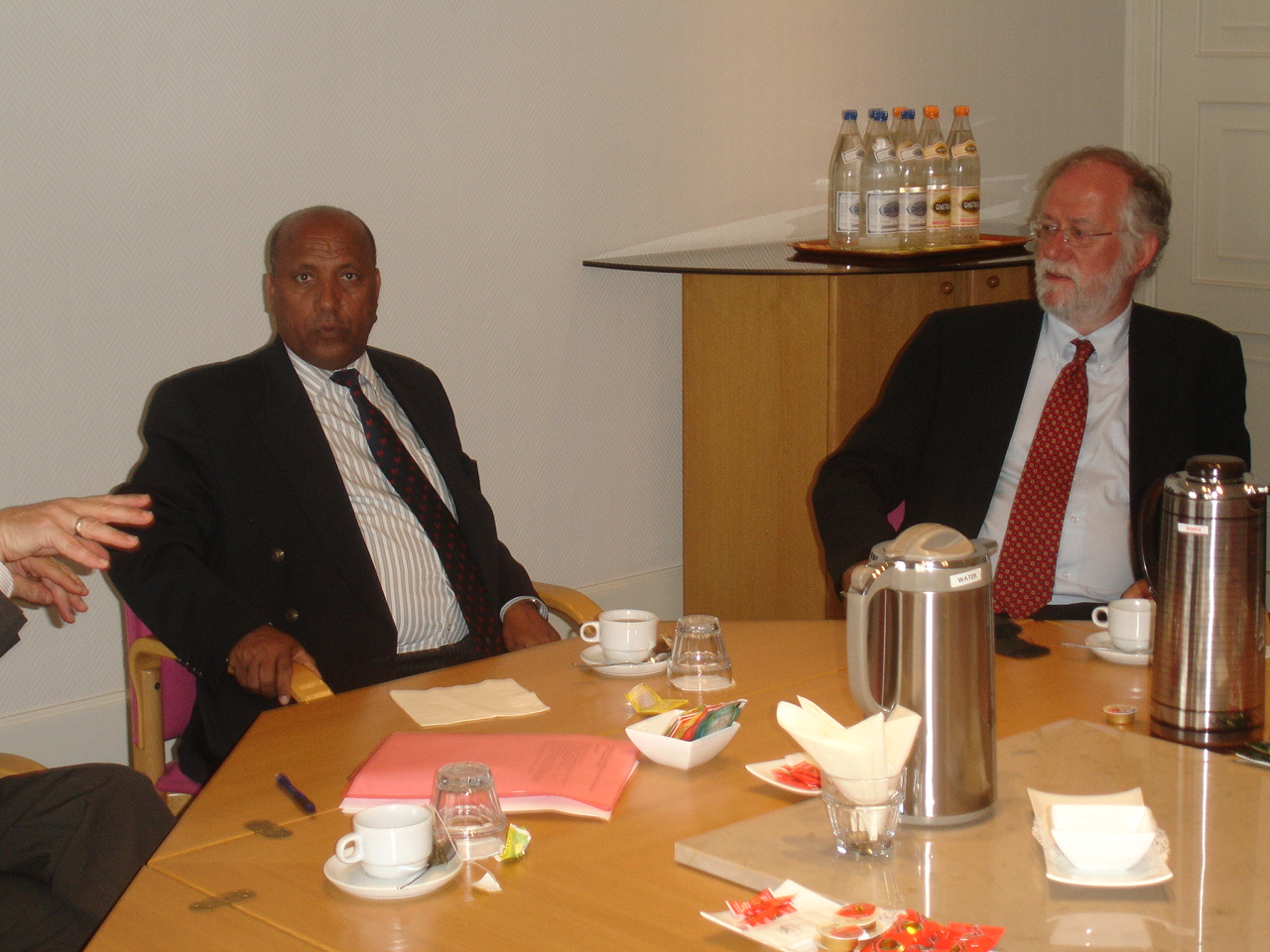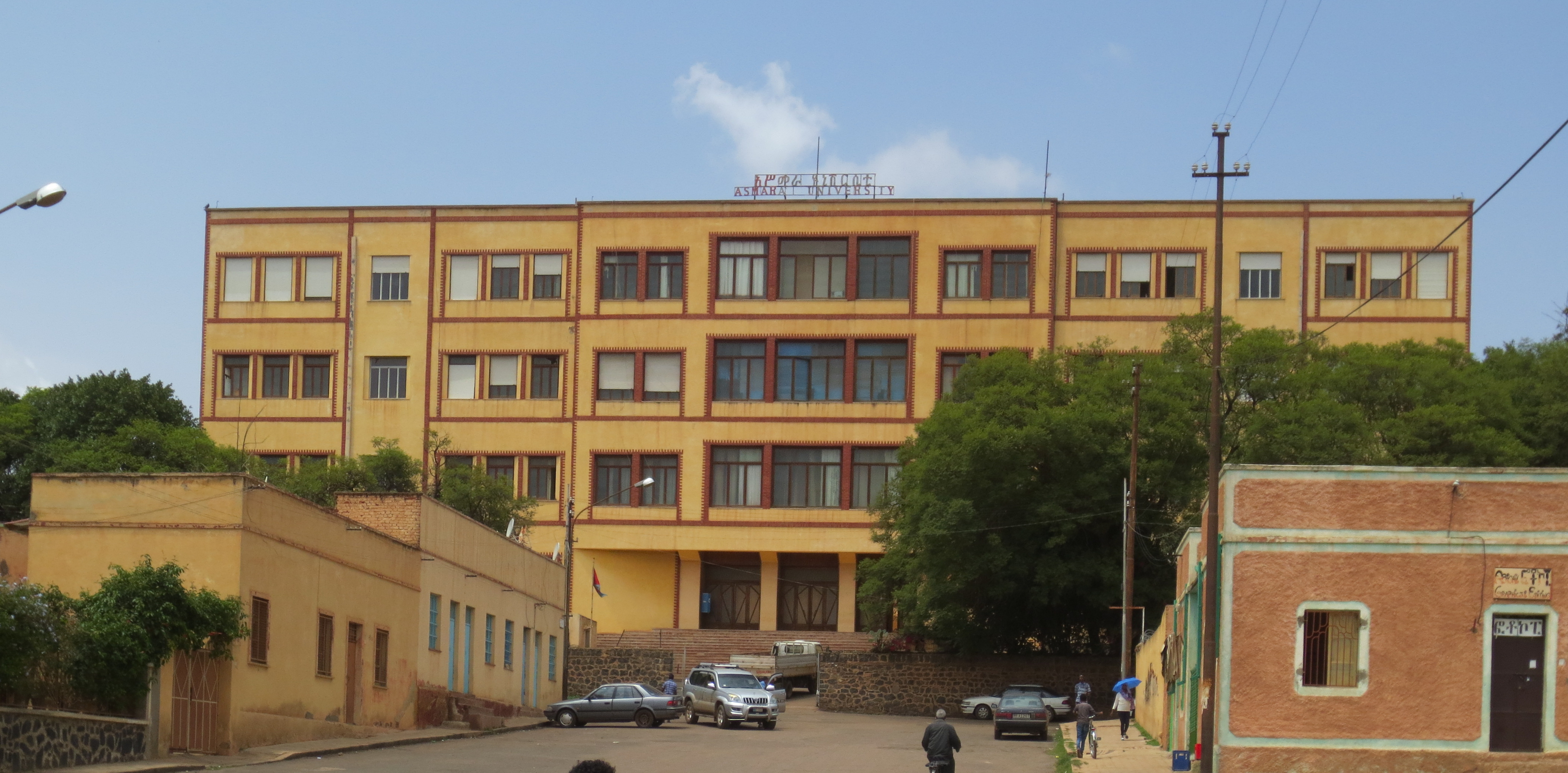|
Mitiku Haile
Mitiku Haile (born 1951) is Professor of Soil Science at Mekelle University (Ethiopia), undertaking research on sustainable land management, restoration of degraded lands and integrated soil fertility management. Career * 1985: MSc at Ghent University, Belgium * 1987: PhD at Ghent University, Belgium, under the supervision of Prof. Dr. ir. C. Sys * 1987: Assistant professor of Soil Science at Alamaya, now Haramaya UniversityPedon 23 - Physical Land Resources - Universiteit Gent https://www.yumpu.com/en/document/view/32289892/pedon-23-physical-land-resources-universiteit-gent * 1990: staff member of the Arid Zone Agricultural College (established at the University of Asmara, and later on Agarfa in southern Ethiopia) * 1993: dean of the Arid Zone Agricultural College in Mekelle that started with 42 students in 3 degree programmes. Later on, with the establishment of Mekelle University College, he became its dean also. * 2000: president of Mekelle University that was establis ... [...More Info...] [...Related Items...] OR: [Wikipedia] [Google] [Baidu] |
Mekelle University
Mekelle University ( ti, መቐለ ዩኒቨርሲቲ) is a higher education and training public institution located in Mekelle, Tigray Region, Ethiopia, 783 kilometers north of Ethiopia's capital, Addis Ababa. Mekelle University is one of the largest public universities in Ethiopia. It has seven colleges, eight institutes, and more than 90 undergraduate and 70 postgraduate programs. The student intake capacity of Mekelle University has reached 31,000 or 10% of Mekelle's population. History The Arid Zone Agricultural College was established at the University of Asmara, but was then moved to Agarfa in southern Ethiopia in 1990. In 1993, the Arid Zone Agricultural College was moved to Mekelle and started with 42 students in 3 degree programs. After two years, the Faculty of Science and Technology was established at the same campus and, together, these two faculties were then combined into Mekelle University College. Also, a Faculty of Law started its operation by accepting diploma ... [...More Info...] [...Related Items...] OR: [Wikipedia] [Google] [Baidu] |
Ghent University
Ghent University ( nl, Universiteit Gent, abbreviated as UGent) is a public research university located in Ghent, Belgium. Established before the state of Belgium itself, the university was founded by the Dutch King William I in 1817, when the region was incorporated into the United Kingdom of the Netherlands after the fall of First French Empire. In that same year, he founded two other universities for the southern provinces as well, alongside Ghent University: University of Liège and State University of Leuven. After the Belgian revolution of 1830, the newly formed Belgian state began to administer Ghent University. In 1930, UGent became the first Dutch-speaking university in Belgium. Previously, French (and, even earlier, Latin) had been the standard academic language in what was ''Université de Gand''. In 1991, it was granted major autonomy and changed its name accordingly from ''State University of Ghent'' ( nl, Rijksuniversiteit Gent, abbreviated as ''RUG'') to its ... [...More Info...] [...Related Items...] OR: [Wikipedia] [Google] [Baidu] |
Mekelle
Mekelle ( ti, መቐለ, am, መቀሌ, mäqälle, mek’elē) or Mekele is a special zone and capital of the Tigray Region of Ethiopia. Mekelle was formerly the capital of Enderta awraja in Tigray. It is located around north of the Ethiopian capital Addis Ababa, with an elevation of above sea level. Administratively, Mekelle is considered a Special Zone, which is divided into seven sub-cities. It is the economic, cultural, and political hub of northern Ethiopia. Mekelle has grown rapidly since 1991 with a population of 61,000 in 1984, 97,000 inhabitants in 1994 (96.5% being Tigrinya-speakers), and 170,000 in 2006 (i.e. 4% of the population of Tigray). Mekelle is the second-largest city in Ethiopia after Addis Ababa, with a population of around 545,000. It is 2.6 times larger than Adigrat, the second-largest regional center. The majority of the population of Mekelle depends on government employment, commerce, and small-scale enterprises. In 2007, Mekelle had new engineering ... [...More Info...] [...Related Items...] OR: [Wikipedia] [Google] [Baidu] |
Soil Science
Soil science is the study of soil as a natural resource on the surface of the Earth including soil formation, classification and mapping; physical, chemical, biological, and fertility properties of soils; and these properties in relation to the use and management of soils.Jackson, J. A. (1997). Glossary of Geology (4. ed.). Alexandria, Virginia: American Geological Institute. p 604. Sometimes terms which refer to branches of soil science, such as pedology (formation, chemistry, morphology, and classification of soil) and edaphology (how soils interact with living things, especially plants), are used as if synonymous with soil science. The diversity of names associated with this discipline is related to the various associations concerned. Indeed, engineers, agronomists, chemists, geologists, physical geographers, ecologists, biologists, microbiologists, silviculturists, sanitarians, archaeologists, and specialists in regional planning, all contribute to further knowled ... [...More Info...] [...Related Items...] OR: [Wikipedia] [Google] [Baidu] |
Sustainable Land Management
Sustainable land management (SLM) refers to practices and technologies that aim to integrate the management of land, water, and other environmental resources to meet human needs while ensuring long-term sustainability, ecosystem services, biodiversity, and livelihoods. The term is used, for example, in regional planning and soil or environmental protection, as well as in property and estate management. Scope The World Bank defines sustainable land management as a process in a charged environment between environmental protection and the guarantee claim of ecosystem services on the one hand. On the other hand, it is about productivity of agriculture and forestry with respect to demographic growth and increasing pressure in land use. The United Nations Economic Commission for Europe (UNECE) applies the term in a much wider context. Besides agriculture and forestry, they include the mineral extraction sector, property and estate management. In the course of national ... [...More Info...] [...Related Items...] OR: [Wikipedia] [Google] [Baidu] |
Haramaya University
Haramaya University (HU) ( am, ሐረማያ ዩኒቨርሲቲ; Oromo: ''Univarsiitii Haramayaa'') is a public research university in Haramaya, Oromia Region, Ethiopia. It is approximately east of Addis Ababa, Ethiopia. The Ministry of Science and Higher Education admits qualified students to Haramaya University based on their score on the Ethiopian Higher Education Entrance Examination (EHEEE). History Haramaya University as "Haramaya University College of Agricultural and Environmental Sciences" was established in 1954 and it was part of Addis Ababa University until 1985 when it upgraded full-fledged university of agriculture. The university converted to multi-disciplinary university in 1996. The university named as "Haramaya University" in 2006. On 27 May 1985, marking the historic visit of President Mengistu Haile Mariam to campus, the college transformed into University of Agriculture. By 1995/1996, the university underwent new transformation phase involving fields of T ... [...More Info...] [...Related Items...] OR: [Wikipedia] [Google] [Baidu] |
University Of Asmara
The University of Asmara (UoA) was a public university in Asmara, Eritrea. The nation's first university, it was founded in 1958 by the "Piae Madres Nigritiae" ( Comboni Sisters). The school was meant to provide for the local population, though its initial enrollment in the 1950s was entirely Italian. Over the course of its history it has been reopened and reorganised following political changes. In 2006 it was closed and reorganized into other institutions such as the Eritrea Institute of Technology. History The university was founded as the "''Catholic College of Santa Famiglia''" in 1958 by the "Piae Madres Nigritiae" ( Comboni Sisters). In 1964 the university had been renamed as "University of Asmara" and began offering Associate Diploma programs in the arts, commerce, and the sciences. The roots of the university are connected to the 1940s when Dr. Vincenzo Di Meglio promoted the creation of the "School of Medicine" in Italian Asmara. It is also linked historically to the ... [...More Info...] [...Related Items...] OR: [Wikipedia] [Google] [Baidu] |
UNESCO
The United Nations Educational, Scientific and Cultural Organization is a specialized agency of the United Nations (UN) aimed at promoting world peace and security through international cooperation in education, arts, sciences and culture. It has 193 member states and 12 associate members, as well as partners in the non-governmental, intergovernmental and private sector. Headquartered at the World Heritage Centre in Paris, France, UNESCO has 53 regional field offices and 199 national commissions that facilitate its global mandate. UNESCO was founded in 1945 as the successor to the League of Nations's International Committee on Intellectual Cooperation.English summary). Its constitution establishes the agency's goals, governing structure, and operating framework. UNESCO's founding mission, which was shaped by the Second World War, is to advance peace, sustainable development and human rights by facilitating collaboration and dialogue among nations. It pursues this objectiv ... [...More Info...] [...Related Items...] OR: [Wikipedia] [Google] [Baidu] |
Paris
Paris () is the Capital city, capital and List of communes in France with over 20,000 inhabitants, most populous city of France, with an estimated population of 2,165,423 residents in 2019 in an area of more than 105 km² (41 sq mi), making it the List of cities proper by population density, 30th most densely populated city in the world in 2020. Since the 17th century, Paris has been one of the world's major centres of finance, diplomacy, commerce, Fashion capital, fashion, gastronomy, and science. For its leading role in the arts and sciences, as well as its very early system of street lighting, in the 19th century it became known as "the City of Light". Like London, prior to the Second World War, it was also sometimes called Caput Mundi#Paris, the capital of the world. The City of Paris is the centre of the Île-de-France Regions of France, region, or Paris Region, with an estimated population of 12,262,544 in 2019, or about 19% of the population of France, making the ... [...More Info...] [...Related Items...] OR: [Wikipedia] [Google] [Baidu] |
Ghent University Alumni
Ghent ( nl, Gent ; french: Gand ; traditional English: Gaunt) is a city and a municipality in the Flemish Region of Belgium. It is the capital and largest city of the East Flanders province, and the third largest in the country, exceeded in size only by Brussels and Antwerp. It is a port and university city. The city originally started as a settlement at the confluence of the Rivers Scheldt and Leie and in the Late Middle Ages became one of the largest and richest cities of northern Europe, with some 50,000 people in 1300. The municipality comprises the city of Ghent proper and the surrounding suburbs of Afsnee, Desteldonk, Drongen, Gentbrugge, Ledeberg, Mariakerke, Mendonk, Oostakker, Sint-Amandsberg, Sint-Denijs-Westrem, Sint-Kruis-Winkel, Wondelgem and Zwijnaarde. With 262,219 inhabitants at the beginning of 2019, Ghent is Belgium's second largest municipality by number of inhabitants. The metropolitan area, including the outer commuter zone, covers an area of ... [...More Info...] [...Related Items...] OR: [Wikipedia] [Google] [Baidu] |
Ethiopian Scientists
Ethiopians are the native inhabitants of Ethiopia, as well as the global diaspora of Ethiopia. Ethiopians constitute several component ethnic groups, many of which are closely related to ethnic groups in neighboring Eritrea and other parts of the Horn of Africa. The first documented use of the name "Ethiopia" from Greek name "Αἰθίοψ" (Ethiopian) was in the 4th century during the reign of Aksumite king Ezana. There were three ethnolinguistic groups in the Kingdom of Aksum; Semitic, Cushitic, and Nilo-Saharan (ancestors of the modern-day Kunama and Nara). The Kingdom of Aksum remained a geopolitically influential entity until the pillage of its capital — also named Axum — in the 10th century by Queen Gudit. Nevertheless, the core Aksumite civilization was preserved and continued into the successive Zagwe dynasty. By this time, new ethnic groups emerged – the Tigrayans and Amharas. During the Solomonic period, the latter established major political and cult ... [...More Info...] [...Related Items...] OR: [Wikipedia] [Google] [Baidu] |






